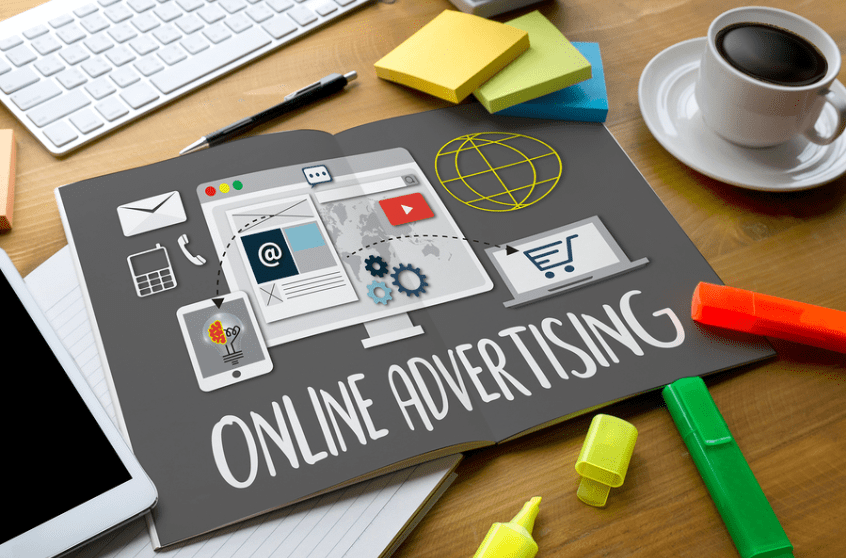If You have a little information about What online advertising is? and How does it works?, currently what formats i.e. types of online advertising are available then rest assured You are at the right place. In this post, we will acknowledge you with everything important that you need to know about online advertising in 2022. So, Let’s get started.
Table of Contents
What is Online Advertising?
Online advertising is a set of strategies used to promote a product or service within a digital channel-friendly society. For this, the effects of reaching the receiver are created by using the internet, social networks, or a smartphone or smart TV.

Digital advertising is constantly evolving. Technology is evolving and with it, consumer trends, so strategies must change and online marketing professionals must constantly learn.
Campaigns should be where users are, so advertising has shifted from the offline world to the online.
To facilitate the work of advertisers, there are tools such as Google Ads and Google Adsense that have an impact on search engines or banners and are less intrusive than Meta ads or Twitter ads.
Artificial Intelligence (AI) is also integrated into online advertising, allowing more profit by having more data on the client to whom the campaign is intended and allowing professionals to assess consumer interest.
Online Advertising: Everything You need to know about in 2022
First You need to understand,
What is an Ad?
Advertising or Ad is a brief visual, audio, or audio-visual endorsement that transmits an advertising message and is known to viewers or potential users.
In the case of the audiovisual messages, they are creative and concise between -10 seconds and 1 minute or even more than that.
What are the various types of Online Advertising?
Native advertising: Strategies are used to gain the trust of the customer by providing solutions to their problems. This is usually done through blogs and topics related to the field that is useful to the recipients are discussed. With SEO, email marketing, and lead nurturing, you can deliver the right content to the sales funnel stage where there is a potential customer.
Search engine advertising: also known as SEM. This includes creating an ad with title, description, call to action, and bidding on specific keywords. With these campaigns, the brand’s outstanding reputation is haunted in a short period of time.
Mobile Advertising: Up to now these ads are adaptations of offline campaigns for computers using responsive technology. Now, mobile marketing methods already exist, such as sending text messages to customers’ devices that embed links to promote your products.
Affiliate Marketing: This is a type of marketing, in which the advertiser pays only for the ad that gets the result. Set your goal, pay based on sales and sales received in eCommerce case. Advertising from commissions responsible for promoting a product or service in their digital environment and the commission payment method used.
Social Media Advertising: Advertisers want to promote themselves on these platforms due to the tremendous increase in the number of social media users. Networks such as Instagram, Twitter, or Meta allow uploaded publications to position themselves higher and achieve more successful results.
But in addition to these promotions, brands are designed to attract customers from self-created campaigns, social advertising, and social networks.
Retargeting or remarketing: The user sees the brand banner they have previously contacted regardless of the site they are on. This is a technique that collects good results. The cost is determined by the price per click.
Display Advertising: These are advertisements containing pictures or videos and are published in specially designed places on any website.
Video Ads: These are promotional videos. Contains ads embedded in YouTube, Vimeo, Netflix, or Dailymotion videos. You can also bet on YouTubers or alliances with your own quality content to get enough organic positioning with SEO along with live traffic.
Online V/S Traditional Advertising
Online advertising was born from the need to adapt to new types of consumption. Not, for this reason, traditional offline advertising should disappear. The two supports must coexist and a good strategy will have to take both into account.
With high pace, online advertising is gaining the game to the offline. Traditional advertising of brochures, television, or radio campaigns requires a larger budget and the reach achieved is limited. On the contrary, digital advertising can achieve an impact on a larger target audience through mobile phones, computers, or social networks, with little investment.
Traditional media such as television or magazines see their advertising income reduced year after year to the detriment of digital formats such as search engines, websites, or social networks. Taking into account the crisis caused by the pandemic which, due to the lack of activity, greatly affected the advertising sector, the conventional media had an estimated real investment of 4,878.9 million dollars compared to the 5,914.7 million dollars they received the so-called estimated media, according to the InfoAdex study of Advertising Investment in 2021.
Online and traditional Advertising has some common elements
Image: It has everything that can imagine the identity of a brand.
Message: Tell people the information you want to convey.
Logo: An icon with images, letters, or both.
Slogan: The phrase or word that defines the brand and comes with the message.
Who is an Online Advertising agency?

An Advertising agency is a company that advises an advertiser on how to run advertising campaigns targeting specific audiences with a pre-determined budget. Its purpose is to promote a brand, product, or service to promote the business creatively and effectively.
Its purpose is to draw public attention to who the ad is directed to so that they can choose the contracting party rather than the competitors. The best way to do this is to choose the most effective medium, such as television, radio, written press, website, blog, social network …
In an Ad agency, there are many professionals who are responsible for each step of the process. Authors who take care of the right vocabulary to describe are very important; Art directors who create visual concepts; The media planner who selects the media in which the ad will be published and the account officers who liaise with the advertiser.
How you can advertise on the internet?
Advertising on the Internet can be done in different ways depending on the platform used and the financial investment you make. Most commonly used:
Google Ads (formerly Google AdWords)
This is a Google Ads tool. Learn about the product or service, attract new customers, increase online sales and highlight the dubious brand. Its biggest advantage is that you can advertise without making a big investment. There are five ways to advertise on this platform: Search Network, Display Network, Google Shopping, Video, and Universal Applications.
Advertising on Meta by Facebook and Twitter
Both allow you to add ads to your timeline. Meta Ads and Twitter Ads have an easy-to-use system for users in which they can choose what ads, format, and text they want, divide the audience they want to spend, select daily spending and schedule the campaign. Date and end can start.
Instagram ads
This social network is one of the most influential, so there is a lot of publicity in this medium through promoted publications or deals with influencers. It allows you to embed ads to reach a specific audience through Instagram ads and it is a great choice for digital entrepreneurs.
Native ads
This is the most popular way to advertise without interrupting the user experience, it is not inappropriate and it looks like its own content.
YouTube Ads
This video platform has become a place to exchange content, knowledge and advertise products or services. You can advertise on it through Google Ads or by contracting with the content creators.
Online Advertising Statistics

The cost of online advertising worldwide is 2018-2023
Despite the financial impact of the covid-19 pandemic, the cost of digital advertising worldwide in 2020 is estimated at the US $378.16 billion and is projected to rise and fall against 2019 figures.
Advertising cost – Additional information
Advertising can use almost any type of media to meet its needs. Targeted by all media advertisers, including print, television, radio, film, outdoor, mobile and digital. Global advertising spending has been steadily rising since 2010 (excluding 2020) and is projected to reach approximately US $750 billion by 2023.
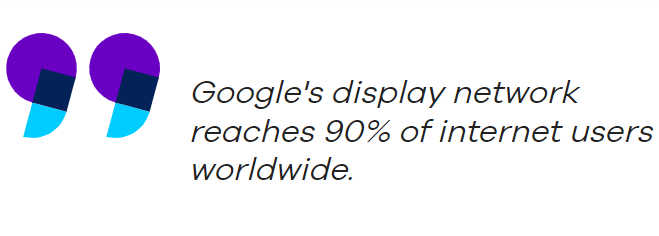
Due to advances in technology and consumer preferences, not all media invest as much as others. By 2020, the Internet will be the most important medium for advertisers, accounting for 51 percent of total media advertising spending 2020. Internet spending is projected to grow by 15.4 percent in 2021.
The cost of online advertising worldwide- including both desktop and Laptop Computers as well as mobile devices – is estimated at US $378 billion by 2020. That number is expected to increase steadily over the coming years, reaching a total of US $646 billion by 2024. Mobile Internet advertising is a heavily invested sub-sector digital advertising industry.
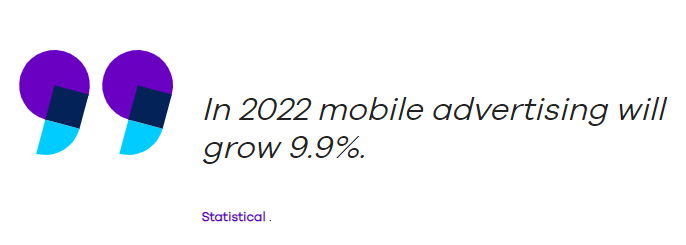
The cost of mobile internet advertising is projected to increase from the US $276 billion in 2020 to approximately US $495 billion in 2024. Following this approach, the cost of US mobile advertising is expected to increase in the US as well as the cost of US mobile advertising in the US. Doubling between 2022 and 2023.
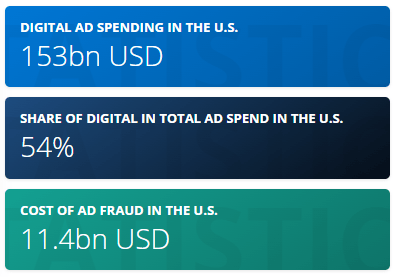
Thanks to the ever-increasing internet penetration rates and the ever-increasing popularity of digital platforms around the world, Online advertising has become one of the most important forms of advertising. In 2020, the US $356 billion will be spent on digital advertising. This number is expected to grow rapidly in the coming years. According to the latest estimates, online advertising revenue will reach the US $460 billion by 2024.
Advantages of Online Advertising
Online advertising has two main advantages over traditional advertising: lower costs and a greater number of effects. In addition to these, there are five other that are very important:
Segmentation: Having more data means learning more about the user and thereby being able to create campaigns to influence the desired customer and target a more segmented audience without wasting impressions.
Reasonable price: From a few dollars to large sums per day for a single campaign, the online format is suitable for all purchasing power.
Creativity: Images, videos, displays of all sizes, text-free text, interactions with users or complimenting formats, everything has a place on the Internet.
Comprehensive metrics: Measurement tools allow you to have real-time data and find out its impact when launching a campaign without having to wait.
Availability: Internet ads are available 24/7 and can be viewed by any user with an Internet connection.
Disadvantages of Online Advertising
Those who want to invest in online advertising have many advantages and very few disadvantages. It has some disadvantages:
Saturation: There are a lot of ads and advertisers on the internet. If multiple banners are not piled up in one place, it will be difficult for the user to see them all, so content marketing is increasingly being used.
Lack of trust: Some users do not trust certain promotions because they are spam. In addition, some customers are reluctant to pay electronically or buy the product from e-commerce because they can not touch the goods before purchasing. You can not touch them before you buy them.
Internet Connection: If overly complex websites are created with too many elements, slow navigation can cause problems. The user may get bored and leave the site before seeing the ad. Additionally, it is an advertisement that can only be reached by people with Internet access.
Online advertising media
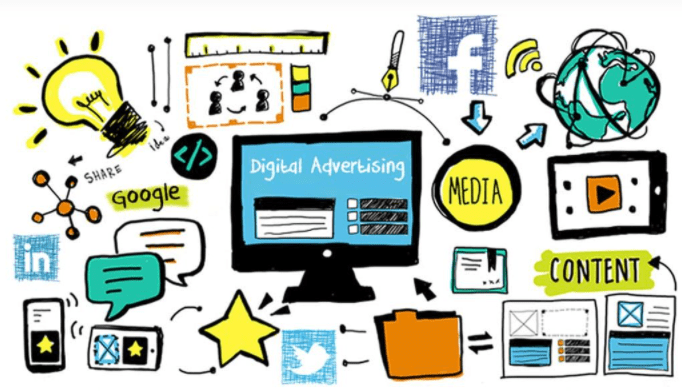
Online advertising media can be divided into two major blocks: organic media and paid media.
1) Organic media
Brands are disclosed without the need to register or pay to link.
SEO: Optimization of pages on a website so that they look better in search engines’ organic results.
Social Networks: Advertising through content published on these platforms and interactions with the audience.
Email Marketing: Sending emails to promote promotions or content that allows for a close relationship with the customer.
Blog: Publishing articles on the area dedicated to the company to attract customers and improve the situation.
Guest Posting: Content posted by guests to a brand partner’s blog to attract new audiences and increase visitor traffic.
2) Payment methods
Those payments are made through the platform:
Sponsored Links or SEM: Text ads that appear at the top of search engines.
Displays: Visual ads that appear on the content of web pages.
Social advertising: Paid advertising on social networks in various formats.
Mobile Ads: All ads related to mobile devices.
Google Shopping – Ads for products that appear in search results for the price, brand, and where to buy them.
Online Advertising Professionals
Online advertising has created new profiles of professionals who do not need traditional advertising.
With new technologies and new marketing methods, there are tasks that are not covered by traditional advertisers and hence today marketing teams have different profiles, each assigned a specific task:
The community manager is responsible for running the brand’s social network. He inspires the community, creates content, gives users feedback, and reaches out to them to find what they like.
The social media planner is the person who decides the strategy to be followed on social media. He proposes the evaluation of goals, tasks, tools, and outcomes.
SEO professional means optimizing the web location and making necessary corrections without losing places in searches.
Multimedia programmers and designers who develop web content, banners, landing pages, or emails, among other things.
A web analyst is a person who describes data from analytical tools on both the web and social media. He makes decisions based on established goals.
The person in charge of digital marketing coordinates the entire team and oversees the completion of everything.
How much does Online Advertising cost?
In the digital arena, there is no set price for advertising and varies based on the technology and endorsement chosen to stand up to competitors. If the goal is to create disrepute for the brand, the price will skyrocket as the process of buying it is lengthy.
In an online advertising campaign, if there is an influx of 100 to 500 daily visits, the price can reach up to $200 per month. The maximum order on a regular blog is between $500 and $1,000 per month. According to a HubSpot study, the average price is $3.33 per click and you can charge up to $165 per click.
The most common ways to charge from an advertiser on the web:
CPC (cost per click)
The advertiser pays for every click on his ad. These clicks range in price from 1 percent to $10 per click or even greater depending on the bid.
CPM (cost per thousand)
The advertiser pays for every thousand impressions. It does not count clicks, conversions, or purchases.
CPA (cost per acquisition)
The consumer is paid by the advertiser every time they make a purchase. This model offers a better return on investment of around $40 per share.
Flat rate
The advertiser pays a fixed price for the time specified on the specific website. It is popular in small businesses. Advertisers display statistics and set prices based on location, quantity, and duration of stay.
Online Advertising: The Bottom Line
In conclusion, there are many advantages and a few disadvantages to online advertising on the World Wide Web. In my opinion, I believe the benefits outweigh the disadvantages. By having online advertising, your ad can be viewed worldwide, taking your business to a whole new level and targeting a larger audience.
Its low cost offers small businesses the opportunity to invest in online marketing by reducing the starting price of marketing. The vast range of the Internet allows everyday customers to experience more services offered by businesses and make it a convenient place for shoppers. This allows people to spend more time in their lives than other traditional shopping methods such as going to the store to pay bills. Internet help has helped us, humans, in many ways.
In particular, The Internet is always evolving and in this case, it will create a much better space for online advertising. It has proven to be a top advertising method along with all other media and guarantees results from every time.
If You find this topic interesting. don’t forget to share and discuss. Thank You.

